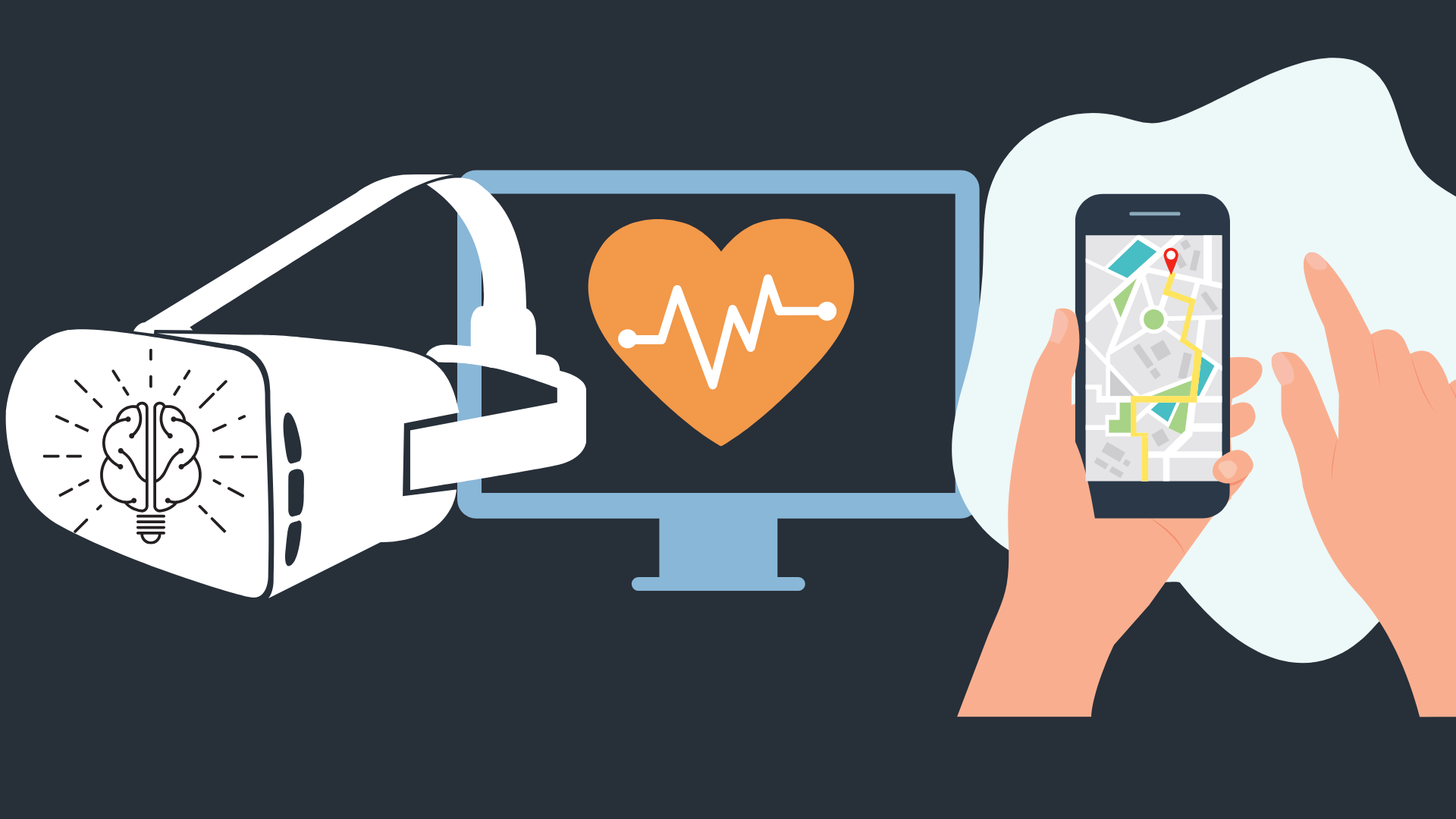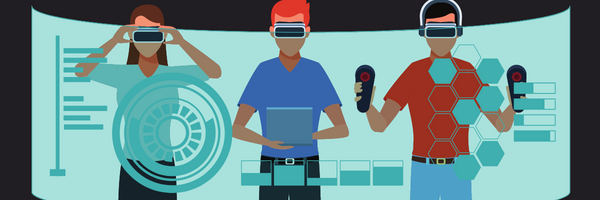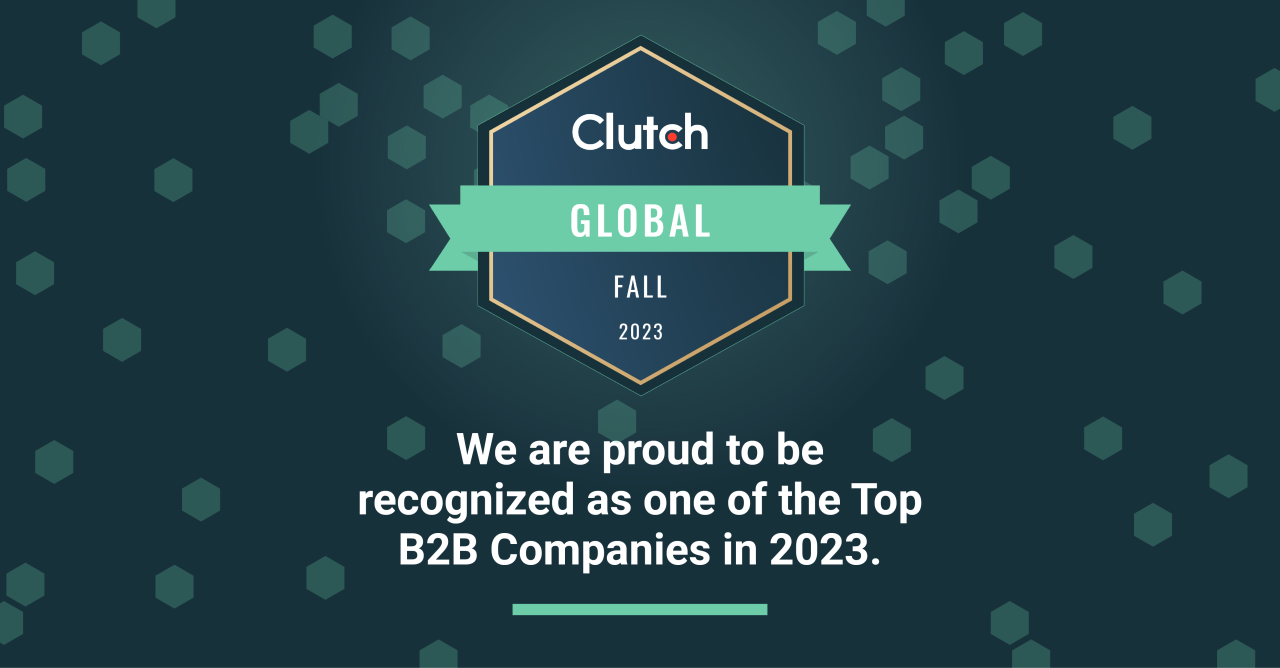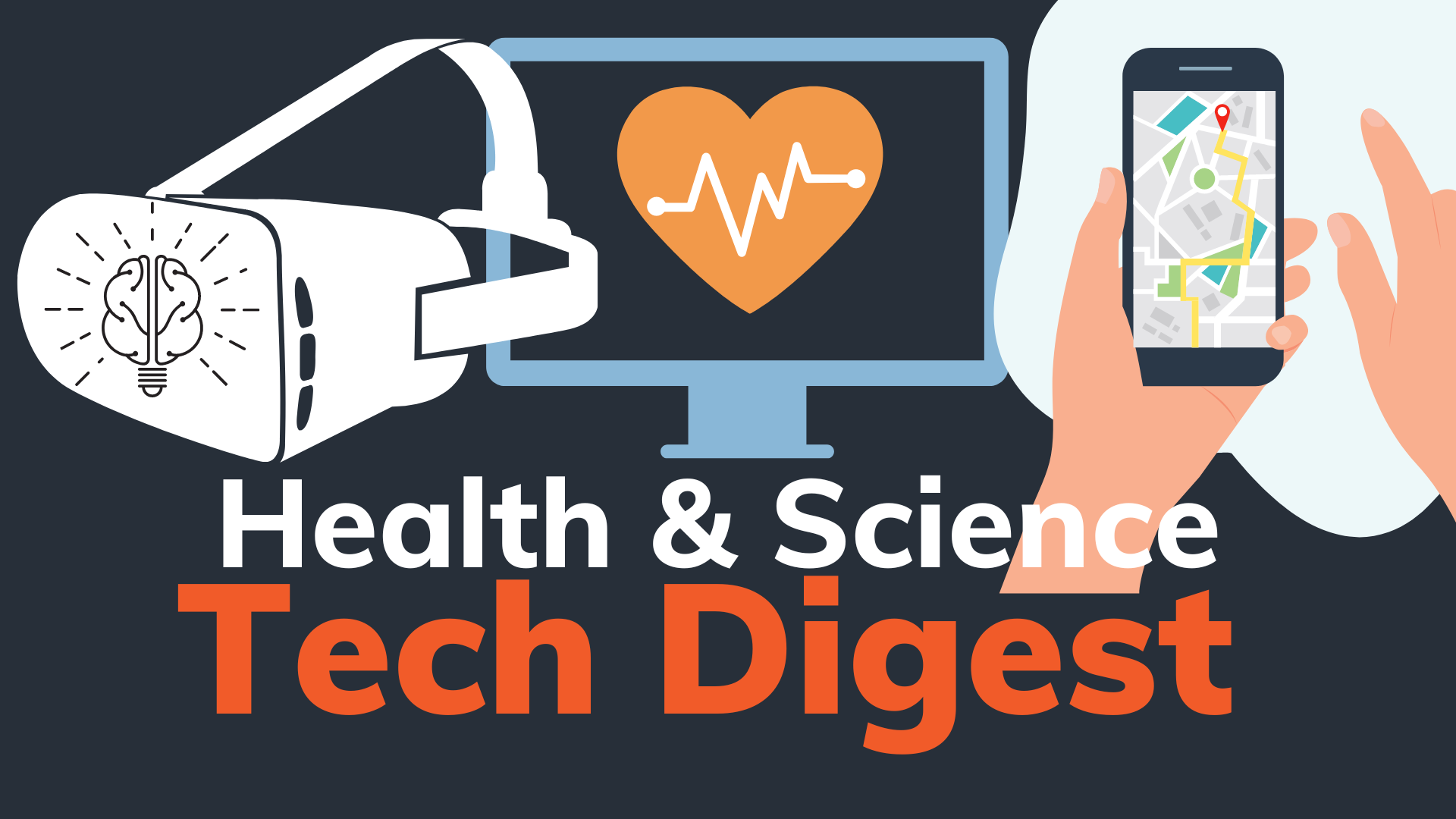Dear Readers,
Health & Science Tech Digest: March 2023
Virtual reality (VR) has the incredible ability to transport us to places we've never been before, to experience things we never thought possible, and to connect with people in ways that were previously unimaginable. Now we can also say — it can take us on a psychedelic journey. This month’s digest showcases VR’s potential in psychedelic-assisted and replicated therapies. In other discussions, we share how smartphone technology can provide clinically accurate screening, or detect your hemoglobin levels from the snap of an eyelid picture. This is not the stuff of science fiction. We hope you enjoy March’s Health and Science Tech Digest.
Warmest regards,
DeAnne Canieso, PhD
Communications Manager
Get Our Health & Science Tech Digest Sent to you Monthly
Subscribe to our Health & Science Tech Huddle newsletter to get this curated list of relevant news, research, and resources sent to your inbox each month. Plus get additional resources designed to empower health & science innovators.
News
Virtual Reality, A Powerful Psychedelic Adjunct?
In a recent panel session at SXSW, neuroscientist Walter Greenleaf states, “VR technologies are going to be a powerful adjunct to support psychedelic therapy.” VR is gaining increased traction in mental health as a result of its therapeutic potential, and while the idea of a psychedelic-VR combo may sound like an entirely new experience, it is not without precedent.
By itself, psychedelics such as psilocybin and LSD demonstrate promise in the treatment of PTSD, anxiety, and depression. In fact, back in 2018 the FDA gave psilocybin-assisted psychotherapy a breakthrough therapy status for treatment-resistant depression. The use of VR adds a special touch with its capability to facilitate transcendental experiences alongside a trained professional or pre-programmed script. And while taking psychedelics in the real world can be unpredictable, using them while in a VR environment could provide a level of safety and control for therapy providers that may not be possible otherwise.
More research is now being done to investigate the use of VR with psilocybin, VR’s additional cross applicability with other psychedelics, and as a standalone therapy too. Interestingly, a current study found that VR is just as good as psychedelics in helping people reach transcendence based on four key indicators typically used in studies of psychedelics. Could VR mimic psychedelic experiences in the future? Read more about the fascinating studies in our research section below.
Purdue Researcher Develops an App Measuring Blood Hemoglobin from Smartphone Eyelid Photos
HemaChrome, a Purdue-based digital health startup, developed a new mobile health app that can measure blood hemoglobin (Hgb) levels from pictures captured of an inner eyelid. Hgb levels give you an indicator of how much oxygen is being delivered to your tissues and organs, and low or high Hgb can be a marker for diseases such as anemia, polycythemia vera, and vitamin deficiency.
The endeavor was spearheaded by professor and associate head of research, Dr. Young Kim, whose team created an mHealth algorithm that can estimate blood Hgb levels from the palpebral conjunctiva (a tissue site in the inner eyelid). Currently, Hgb tests require venous blood draws, a medical visit, and sophisticated equipment with results taking several days. With this novel technology, levels could be tested remotely, in a non-invasive manner, and with equipment already in the hands of patients!
To add to the excitement, HemoChrome recently won phase I of the National Institutes of Health’s (NIH) RADx Tech for Maternal Health Challenge, further receiving in-house support from the NIH to accelerate development, validation, and commercialization of the technology. Now that smartphones are embedded with equipment to support greater screening possibilities, from built-in sensors, high resolution cameras, and fast processing power, could it be that the most powerful diagnostic health tool is already in our hands?
Research Roundup
Smartphone as a Disease Screening Tool: A Systematic Review
Researchers conducted a systematic review of the literature to evaluate the use of smartphone apps for disease screening in health research and medicine. According to the authors, apps administered within a clinical setting typically screened for hearing, visual impairment, and dry eyes. In research studies, a wide variation of medical conditions were screened including various eye diseases, cardiovascular disease (CVD), and depression. The implementation of mobile screening technologies led to many applications having the ability to screen patients with clinically acceptable accuracy.
This research is particularly important because chronic conditions, such as diabetes and CVD, are growing rapidly and the promising use of smartphones for detection and diagnosis can help identify these diseases at pre-symptomatic stages. By catching markers of the disease early on, healthcare providers can help minimize progression and bring treatment to patients as soon as possible.
However, one thing of note is that the authors recognized the need to design mHealth solutions incorporating simple and straightforward interfaces that are additionally easily accessible. This would mean considering aspects of usability that are appropriate to a user’s age group or condition, such as screen size, font size, convenient user interface, and easily attachable hardware devices. Essentially, it is critical that we not assume everyone is a savvy digital native, and to think through the implications of visual and motor impairment when developing mHealth technology. Read the Research
Psychedelic Replications in Virtual Reality and Their Potential as a Therapeutic Instrument: An Open-Label Feasibility Study
In this feasibility study, participants with mild-to-moderate depression underwent a 2-day therapeutic intervention implementing Psyrreal. Psyrreal is a VR experience where a user is immersed in multiple surreal and vastly different virtual environments that mimic components of a psychedelic journey. An analysis of semi-structured interviews and questionnaires followed, and the 2-day intervention led to significant decreases in depressive symptoms on a 2-week follow up.
Could VR replicate the journeys we take, psychedelic and otherwise? Researchers are suggesting that VR could be situated on a broader spectrum of psychedelic technologies in their ability to induce mystical-type experiences. And as shared in a prior digest, a VR nature walk can evoke similar positive wellbeing benefits as a journey through a physical forest. These, and many other examples, highlight the potential for VR to become a successful digital therapeutic.
In this particular case, interviews with Psyrreal participants reported receiving beneficial insights related to their problems. Others mentioned gaining new perspectives during their VR experience. While the sample size of the study is clearly a limitation, and definitive conclusions cannot be made, an overall decrease in depressive symptoms for 73% of the participants is nothing to balk at. With more developments and applications of VR in this space, perhaps the therapeutic potential can become more clear over time. Read the Research
Group VR experiences Can Produce Ego Attenuation and Connectedness Comparable to Psychedelics
This study found that a psychedelic-like experience in VR, can provide a similar self-transcendent mental state as a medium dose of LSD or psilocybin. Researchers created Isness-D, a VR environment where participants cohabitate a space as luminous bodies of energy. The experience enabled participants from around the world to experiment with body boundaries by allowing the coalescence and diffusion of their energetic bodies in VR. During the experience, the interactions sometimes made it difficult to specify where one luminescent self ended and another began.
The platform was meant to mimic self-transcendent experiences (STEs). There has been an increasing interest in the therapeutic potential of STEs, which are typically experienced with psychedelics. During STEs, individuals feel a keen sense of unity and diminished isolation, which has been shown to decrease ego and increase connectedness. In the analysis of four different testing scales used in psychedelic drug studies, Isness-D results were statistically indistinguishable from psychedelic test results.
What makes this use case fascinating is that it underlines VR’s standalone potential in simulating an experience typically derived via a pharmaceutical. And Isness-D is just one example of VR’s benefits on the cognitive front. It truly begs the question, is VR blurring its own boundaries? No matter how you cut it, VR is still a digital representation of reality. The experience may not be as profound as a real-world experience, but it’s still too early to tell what kind of social scientific impact VR could provide in many areas. Read the Research
Do you have thoughts about the topics in our digest? Feel free to contact me with your impression and ideas, and be a part of the conversation in our next Health & Science Tech Digest.
Get Our Health & Science Tech Digest Sent to you Monthly
Subscribe to our Health & Science Tech Huddle newsletter to get this curated list of relevant news, research, and resources sent to your inbox each month. Plus get additional resources designed to empower health & science innovators.





